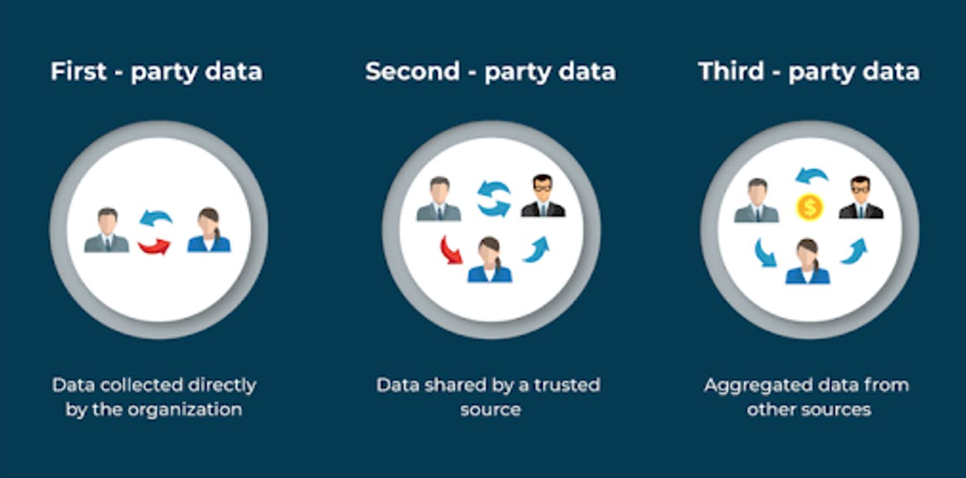
First-party data may seem like an overkilled buzzword in the digital space, but it’s anything but.
With Google recently announcing plans to make cookies (almost!) extinct in the Chrome browser, it’s even more necessary to talk about first-party data now, or more importantly, what they are, why you should care, and how your business can take advantage of this little digital nugget.
Welcome to the realm of first-party data, where your targeting successes rely on a cookie-free digital experience.
Read more: Are We the Next FLoC of Sheep? Google Chrome FLoC Explained
What is first-party data?
It’s as simple as the first word states – “first”. In this case, it refers to any information collected from your customers through your own digital channels.
This data is preferably the best group of data to collect, as your customers have agreed and released the right to share their information with your business, making it issue-free and completely yours.

Here’s where you may find your first-party data:
- Website or app behavior
- Email and newsletter subscribers
- Lead generation campaigns
- Surveys
- Social media
- Subscriptions
- Customer feedback
- Customer service/sales conversations
- Online chat
Through these sources, your business can collect a variety of data about your customers – from their demographics, website activity, and email interaction rates to feedback/reviews and cart abandonment and purchase history.
Read more: Programmatic Advertising in a Cookie-Less SEA
What does this do for your business?
Essentially, having ownership over these sources of data gives you a better shot at targeting, retargeting, and reaching relevant leads to usher them towards purchasing products or buying your services.
It doesn’t just do that – owning first-party data gives you leverage over competitors, where anybody can access third-party data, only you will have eyes to your own customer information database (their preferences, behavior, and more).
If you’re operating in a highly competitive market, this can mean a world of difference between being a bottom feeder or an alpha player.

Thanks, elfo, so what should I do now to activate first-party data?
To better understand how you can use first-party data to feed into your brand’s ecosystem, let’s take a look at Marriott International.

Marriott International made headlines when it announced plans to launch a media network in collaboration with Yahoo, that seeks to use first-party data from direct customer interactions. The data will then be presented to customers across all owned digital and offline channels including on the hotel’s website, and TV sets in hotel rooms.
The Marriott Media Network, an omnichannel cross-platform ad solution for marketers, is a full-stack collaboration that leverages Yahoo’s sell-side platform (SSP) and demand-side platform (DSP).
What makes it particularly noteworthy is how brands, even ones with an international footprint and a large service presence, can deliver increasingly curated, and personalized experiences.
Unlock the true potential of first-party data with these key elements
- Build brand trust. With every direct interaction a customer makes, there is an exchange of raw, valuable, and accurate data that enables the delivery of exceptional service.
- Know where your customers are in your marketing funnel. An accurate analysis of your customer segmentation shows how deeply a brand understands what is needed or desired by your customers in order to push them further along the funnel.
- The more personal the experience is, the more likely your customers trust you with their data. By taking the time to communicate and review each customer’s experience, you will be able to send out the right messages at the right time to the right people.
- Spread a cohesive message in cross-channel campaign management. This helps create a seamless integration and backstory for your customers that will check out, no matter where they view your message on.
It’s as easy as ABC!
At elfo, whether it’s tough to chew or easy to munch, we got your back. Digital has always been our forte, so what are you waiting for? Take charge of first-party data with us.




